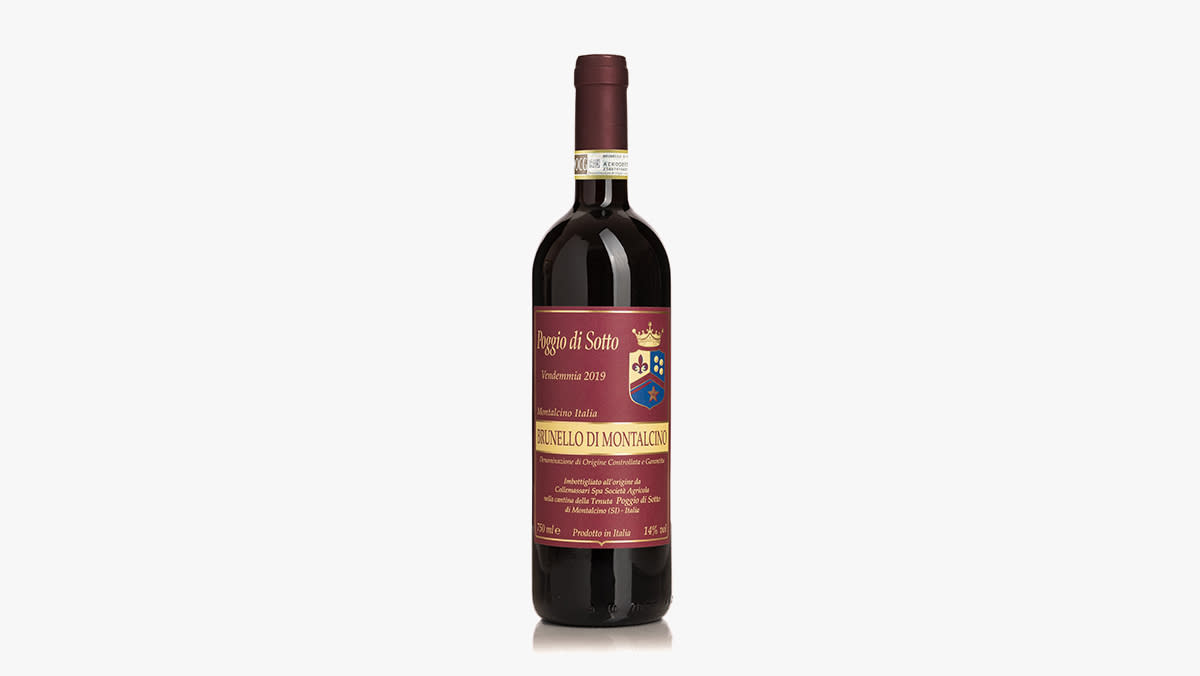This Tuscan Winery Cultivated 182 Different Sangiovese Clones for Its Exceptional Brunello

Winemaker Leonardo Berti of Poggio di Sotto in Montalcino stands out in a world where almost everyone is more than happy to tell you how hard they work. “Winemaking at Poggio di Sotto is the easiest job in the world,” Berti said at a recent vertical tasting featuring eight vintages of Poggio di Sotto Brunello di Montalcino from 2010 through the newly released 2019. He wasn’t entirely downplaying the roles of himself and his winemaking colleague Luca Marrone and consultant Federico Staderini, but rather praising the output of the winery’s nearly 50 acres of Sangiovese vines for being the ideal prima materia from which to produce wine.
The debt for the relative ease of Berti’s job is owed to the winery’s founder, Piero Palmucci, whose team did extensive research into which clones of Sangiovese are best suited to this estate in the southeast of Montalcino and to Claudio Tipa, who took over the winery in 2011. Tipa continued Palmucci’s pioneering work, and today there are 182 different Sangiovese clones planted in the diverse soils at Poggio di Sotto. Unexpectedly, the vines are planted randomly rather than organized by clonal or biotype variety by plot, creating a true monovarietal “field blend” that offers an incredible expression of Brunello di Montalcino. Using a diverse array of clonal expressions creates a tapestry of textures, flavors, and qualities that would otherwise be absent, in the same manner that an orchestra can expand the delivery of a work of music as compared to a solo instrument.
More from Robb Report
Some of the World's Best Luxury Hotels Have House Artists- Here's Why
This Charming Slice of the Tuscan Coast Is Old-School Italy's Best-Kept Secret

Prior to his work researching individual clones, Palmucci had devoted much time to finding the best soils and microclimates for Sangiovese to thrive in. He discovered exactly what he was looking for in the hills at Poggio di Sotto, whose vineyards sit at three distinct altitudes above the Orcia River. Berti explained that while other local wineries, 90 percent of which have only one clone, strive to make a “fat, rich” style of Brunello, Palmucci’s original goal was to coax out a more elegant expression of Sangiovese, a tradition that is carried on today. Although there are scientific methods to measure ripeness in grapes, Berti believes that “sensation” is the best possible guide; the team walks among the vines tasting berries to determine if they are ready for picking. Long, slow macerations followed by aging in large Slavonian barrels from northeast Croatia adds a lighter touch of oak and lets fruit shine through. After two years, the best barrels go into Brunello, and any that the team deems less than perfect are bottled as Rosso di Montalcino.
The 2010 vintage was hailed by winemakers and critics as the “vintage of the century,” a superlative that has also been applied to the 2016 and 2019 vintages. Both the 2010 and 2016 are drinking beautifully now, as is the 2019, although, in Berti’s words, it is still “a diamond in the rough.” He believes it is still at only about 20 or 30 percent of its ultimate potential, which he says will be achieved in about seven years. Although a heatwave and dry period in June of the growing season delayed berry growth, heavy rains in July and August and intermittent hot days with intense sunlight helped to make up the difference. An unhurried month-long harvest allowed for optimal ripening across the estate’s varied terrain, contributing to brilliant acidity and bold aromatics.
Poggio di Sotto 2019 Brunello di Montalcino DOCG has aromas of pomegranate and sage leaf with a whiff of fennel. Gorgeous acidity and elegant tannins support flavors of raspberry, cranberry, dark chocolate, olive paste, crumbled sage, anisette, and a touch of rose petal. This is truly elegance in the making; it will gracefully come into its own with several years of bottle age.
Best of Robb Report
Why a Heritage Turkey Is the Best Thanksgiving Bird—and How to Get One
The 10 Best Wines to Pair With Steak, From Cabernet to Malbec
Sign up for Robb Report's Newsletter. For the latest news, follow us on Facebook, Twitter, and Instagram.


